Opinion
Kenny Schachter on Bad Behavior at FIAC and the Swindle Behind da Vinci’s ‘Salvator Mundi’
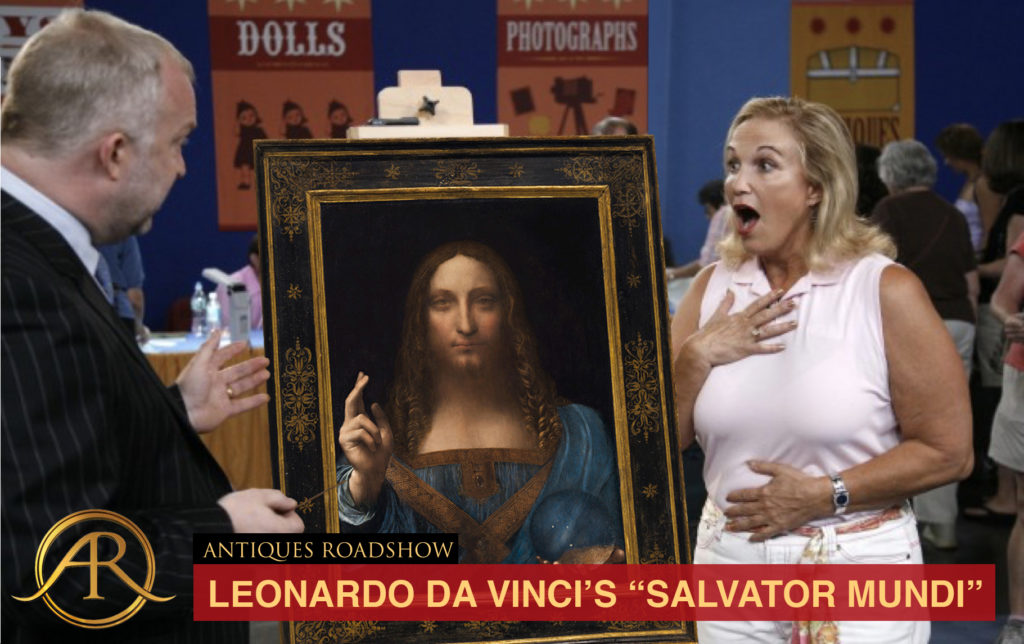

Kenny Schachter

Having just returned from Paris and the 44th edition of the Foire internationale d’art contemporain, otherwise known as FIAC, I’m left with two distinct impressions. The first is that there’s too much art being produced globally; the second is that I can convince myself to like a chunk of it.
When it comes to the marquee art events like FIAC—and the Armory Show, the Art Basel empire, Art Cologne, Art Brussels, Frieze, and the Shanghai attractions—there’s no such thing as a good or bad fair, really. They all have something to offer unless you’re a killjoy far worse than me. Elton John summed it up when he explained why he prefers galleries (and fairs) to museums and the endless march of biennials and festivals: He likes his art with price tags, he said. He’s far from alone.
Also, sometimes the darnedest things can happen at a fair—like when Augusto Perfetti, manufacturer of the Salvador Dalí-designed Chupa Chups pops, popped up at Anthony Meir’s booth at the last Art Basel and, taking a liking (or a licking?) to a classic ’60s Donald Judd stack with an $18 million asking price, spontaneously bought it on the spot. Meanwhile, a high-powered art advisor I spotted at that high-wattage fair has been involved in so many art-world litigations that she now rolls with her lawyer by her side, kind of like the way Gerhard Richter travels to see his paintings with his restorer in tow.
Plus, as an added bonus, fairs often occur in concert with connoisseur-targeted museum shows, as was the case during FIAC with the Picasso Museum’s “Picasso 1932–Love, Fame, Tragedy,” which will travel to Tate Modern in 2018 in an expanded version—becoming, incredibly, the first Picasso show at the museum. Picasso set a fearsome precedent of hyper-productivity (I guess that was before Instagram) that I wish he could have just backed off for a day or two so I could feel better about myself.
Besides the breathtaking art, the artist saved each and every receipt from the bars, restaurants, and hotels he frequented, and these were also on display—he’d have given Warhol a run for his money in hoarding. I bumped into Roland Augustine of Luhring Augustine Gallery, who said Picasso would have been a great candidate to breeze through a tax audit; leave it to an art dealer to make such a point. So much for the notion of the existentially plagued artist as hapless sociopath.
How could you not adore the splendor of the Grand Palais des Champs-Élysées? Anything looks stunning in that Beaux-Arts architectural masterpiece. (Although there was a musty smell that circulated under the sprawling glass ceiling, maybe the pungent odor of perspiration—the hall was steamy with the requisite art-fair lack of air.) After two more iterations, FIAC will need to relocate due to three years of upcoming renovations to the Grand Palais, a doubtless blow to business. I was told the mayor of Paris, despite her deep disdain for the rich, came to the conclusion that the fair must remain centrally located; perhaps she was informed that the city profits more from art than it does from fashion week.
Like that odd smell, there was also a whiff of too much mediocre material trying to pass for otherwise this year, giving the impression that galleries are struggling for good material at this stage. At FIAC, unlike most fairs, art is sold well into the weekend as collectors head in from countryside and surrounding countries; usually these events open well and close badly, period.
Another giveaway about the lack of salable material? The hot new trend is galleries offering up art that’s not for sale. Just as there was a stupendously unavailable Twombly at Frieze Masters with Craig Starr Gallery (of New York), at FIAC there was a seductive R.H. Quaytman at Daniel Buchholz that I was informed would be $110,000 if for sale—but it wasn’t. Design guru Patrick Seguin also had multiple of these literally tantalizing objects. Art not for sale at an art sale? It’s either the ultimate two fingers to buyers or just another marketing ploy. Given that the only power left to dealers is the allocation of art, you can decide for yourself.
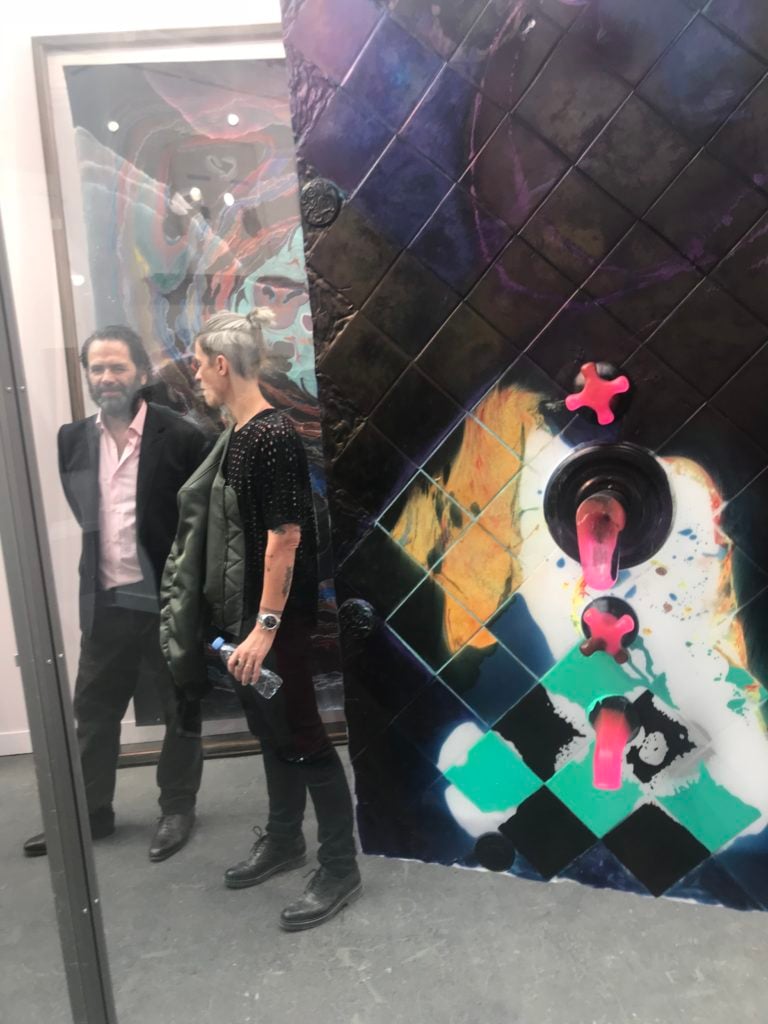
The dealer Gavin Brown.
I’ve known Gavin Brown for nearly three decades, since he worked for 303 Gallery in the ’90s, and have nothing but respect and admiration for his visionary program, showing artists such as Peter Doig, Chris Ofili, Maurizio Cattelan, and Laura Owens, all of them early on. With his bushy beard, Gavin resembles a cute, cynical, and at times nasty Grizzly Adams. Though we’ve been more competitive than friendly—art can be a physical contact sport, believe me—the years have mellowed our relationship.
He even works with a host of artists I worked with prior to him, such as Rob Pruitt, Jonathan Horowitz, Brian Belott, Karl Holmquist, and Joe Bradley (at least before he split for the greener, as in money, pastures of Larry G.). There is always an exhilarating, contagious energy in a given Gavin booth, and Paris was no exception with its installation by Kerstin Brätsch. As I exited, he admonished me to, “Tell it how it is. Keep it going with your writing.” Thanks doc, will do.
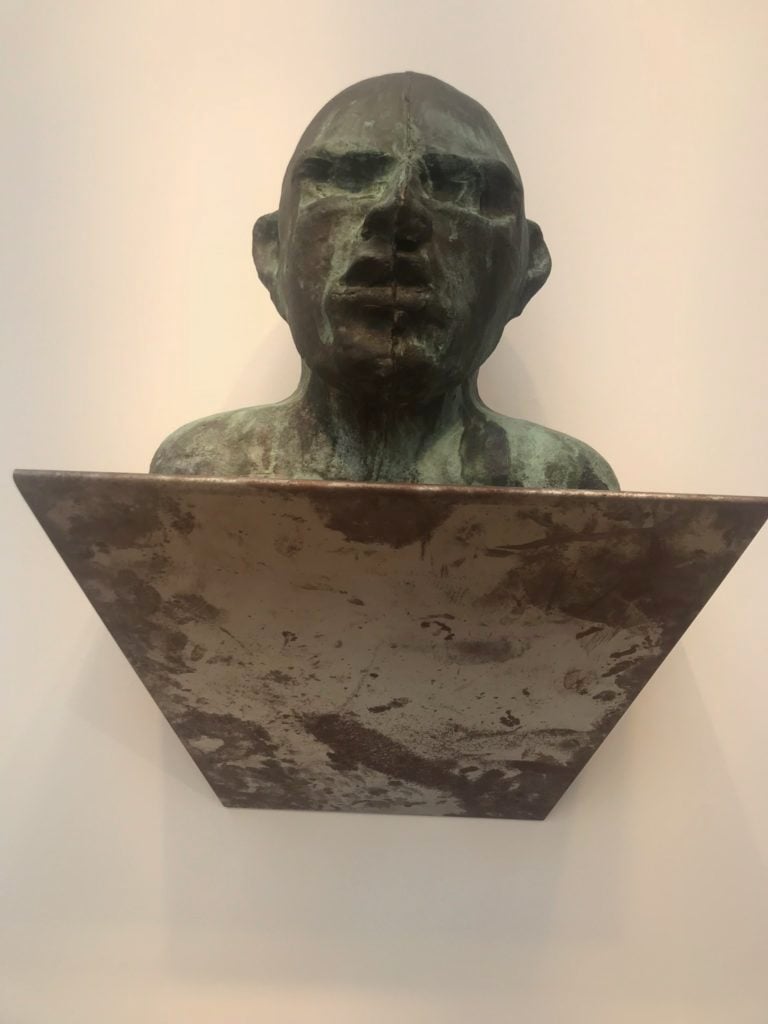
Thomas Schütte at Per Skarstedt.
As I was looking at a Thomas Schütte sculpture in an edition of six for $700,000 at Skarstedt Gallery, the gallery director helping me was interrupted by an assistant fuming about a client, “He just wants Condo, and I can’t!” Everybody seems to want a George Condo now, though a short while ago it was far from the case. As I watched the drama unfold, a private dealer buttonholed me in the booth and literally pulled me outside to show me her selection of Condos. Pro tip: when a sales pitch launches with the line, “It’s one you have to see in person—it’s much stronger in the flesh,” the work is usually a dog. This was no exception.
Sadie Coles is a veritable selling machine, with Rudolf Stingel’s realistic painting of a squirrel sold within a short time of the opening near the asking price of $2.5 million, indicating the Stingel market is alive and kicking. I’m a collector and fan of Ugo Rondinone but I wasn’t crazy about his realistic wax sculptures of dancers—unsold last time I checked at $290,000—that were reminiscent of Marc Quinn’s recent outing at Sir John Soane’s Museum in London (but not as good). Oops, did I say that? What do I know (and sorry everyone)? Oh, and Alex Israel’s new work at Almine Rech and Reena Spaulding looks an awful lot like Sadie Benning’s recent pieces.
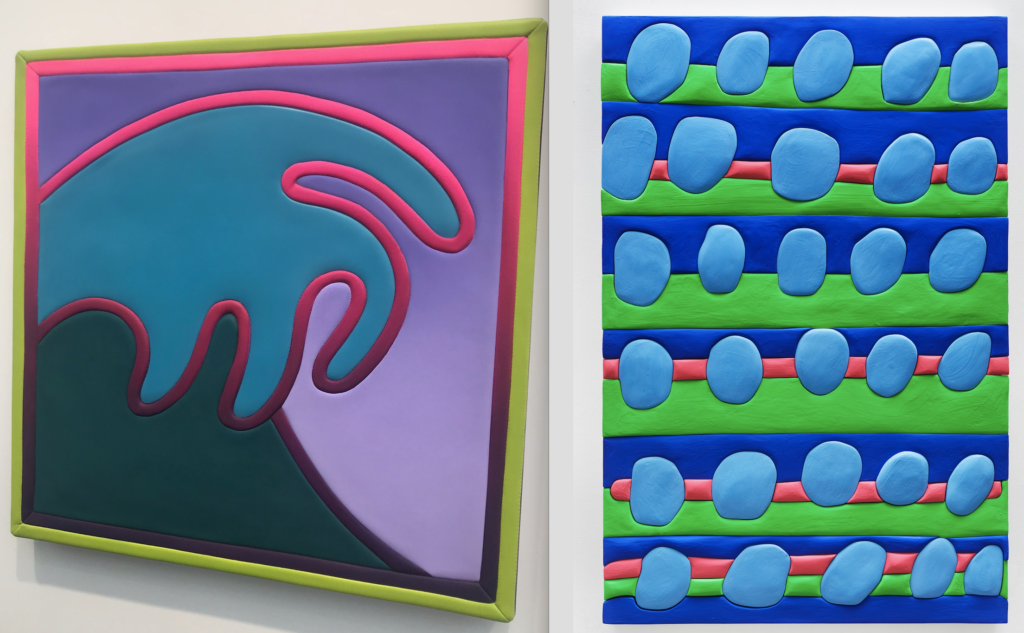
Alex Israel’s new work vs. Sadie Benning’s new work.
Adam Lindemann of Venus Over Everywhere was his usual grumpy, curmudgeonly self, bragging about his recent Goodwood car-racing performance in the UK—he’s good, I’ll hand it to him. He even told me as much himself. Not lacking for confidence, he was all the while shoveling down food and simultaneously trying to force feed me a John Dogg sculpture under the premise the art made from a tire would look good in my garage. As another avid car collector, I admit it makes sense. He’s a good salesman.
Chatting with Joe, the youngest member of the ubiquitous Nahmad art dealing clan, who was fronting his booth naked (i.e. without the sundry members of his family about), I was impressed that he came across as knowledgeable, intelligent, and sensitive. His extraordinary Kurt Schwitters, Jean Tinguelys, and Jean Dubuffets (among others) were too cerebral, too noncommercial to succeed in such a context, though. The shit-brown Dubuffets depicting tables sported provenances ranging from MoMA to Ernst Beyeler, but this was tough material even for the connoisseur, and fairs are not their natural habitat.
People always tell me to write things I don’t want to write, or ask me not to repeat what I’d rather post in my column. I wish I could help myself, but I can’t. Joe only sold a tiny Richard Prince monochromatic joke painting for $550,000, as opposed to his family’s Frieze booth, where business was 20 times as good. The Schwitters were all below $350,000—great art, but not great fair fare.
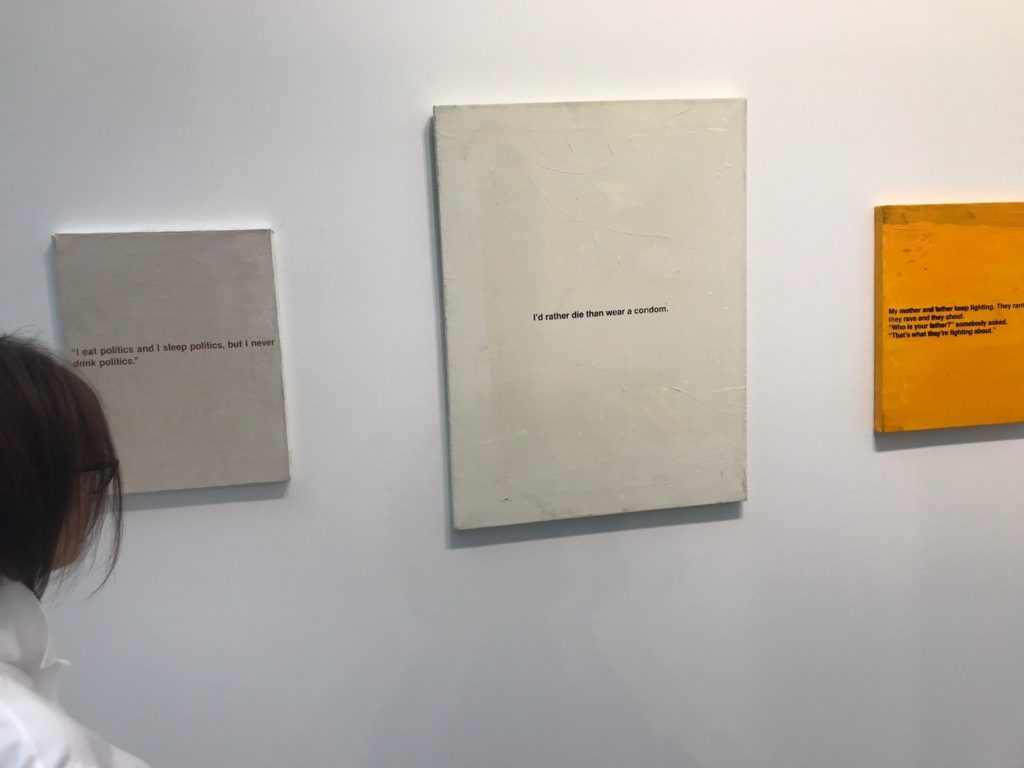
Little Richard Princes at Nahmad.
Among the most revelatory pieces at FIAC was a 1966-7 Robert Irwin painted disc at Pace, which swiftly sold for $4 million. Typically, such reductive, nuanced art does not suit my maximalist sensibility, but maybe I was influenced by the wowing presence of Arne and Milly Glimcher. How could you not be awed by the foresight of these two gallery legends, eons ahead of their times? Arne said he shouldn’t say it (to me, again? Ugh) but Irwin was his favorite artist. I found Irwin’s orb an elucidating, radiating revelation—a nuanced anti-Kapoor-Kapoor. (I’m generally a fan of Anish, but his dishes seem to self-replicate like the heads of a hydra.) I am lucky to call these kinds of aesthetic and personal encounters work.
On Thursday and Friday nights FIAC is open later than normally, and the booze flows freely through the aisles. Though a seemingly natural mix, alcohol and art don’t always fit comfortably together. A drunken reveler stumbled out of Gagosian’s booth but didn’t make it beyond the outside wall, slumping directly against one of the larger-than-life Olivier Mosset monochromic canvases—nearly 20 feet tall apiece (and all sold)—that appeared to stand vigil at the entranceway of the space. They had immediately caught my eye as big, illusionistic, and vulnerable. I must be psychic—the asshole left a perfect impression of the contours of his ass against the pristine, perfectly primed and executed canvas. In the Clyfford Still museum in 2012 a woman dropped her pants, leaned against a painting, and proceeded to urinate on the floor. Is this something people do these days?
Anyone ever involved in engaging with a work of art is charged with but one responsibility: not to fuck it up. This includes the artist that made it. Art is damaged every conceivable way, from inferior materials and methodologies in its making to clumsy handling by shipping companies, collectors, galleries, and museums. From the way it’s commonly treated, you would think art damage is a faultless crime—no one will ever own up to it, and it’s always somebody else’s blunder. It’s a black hole of dis-responsibility.
Though not proud, I’ll readily admit I damaged considerably more works than my children have over the years. To add insult to indignity, I spied a pigeon on the loose in the Grand Palais—perhaps it escaped from the café, the French will eat anything. I imagined it squirting a turd onto Mosset’s tragically damaged painting, à la a Dan Colen bird-shit painting of the type now on view at the Newport Street Gallery (Damien’s self-sanctioning London museum).
I only gave the emerging art section upstairs at FIAC short shrift, and by the time I made it, it was too late: I’d depleted my non-Picassoid, Instagram-incinerated attention span. You really need to split the fair across more than one day.
As I left Paris, I was warned by the taxi driver, in no uncertain terms, of pickpockets at the train station. He needn’t have advised me—as an art-market participant I face the equivalent of petty crime and skullduggery on a daily basis. A friend bet me that art fairs would face a period of steep decline after the mushrooming they’ve undergone, but he’s wrong. I don’t care how many fairs come and go, the overall model, and how it’s influenced/impacted the buying, selling, and experiencing of art will not go away anytime soon, forever.
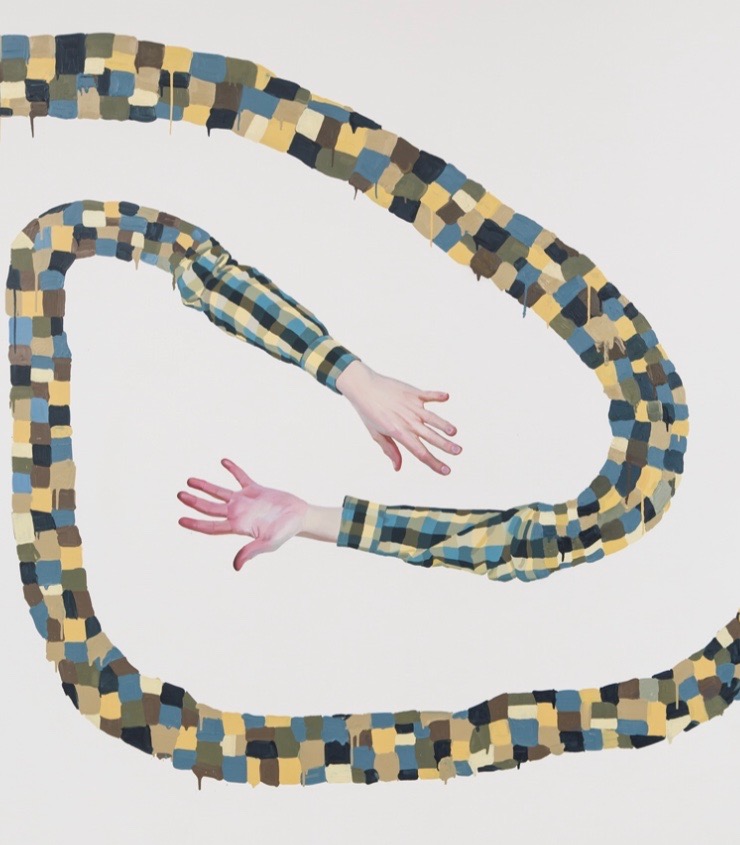
Eliza Douglas at Air de Paris. (Kenny bought one.)
After a Swiss collector who was ill just dropped dead at an art fair, a friend asked me why he’d attend in such a sickly state. Why not? I said. For better or worse, it’s probably my fate—I’d rather a Basel death or to croak at Christie’s than anywhere else. I tried not to buy at FIAC for a change, but failed miserably as usual. I’m fair director’s wet dream, and I can’t not go—it’s my beat. Next stop: Shanghai.
Regarding the upcoming New York November blockbuster auctions, the football-field-scaled Andy Warhol painting Sixty Last Suppers (measuring 116 x 393 inches, 294.6 x 998.2 cm) from 1986, the year before his death, is guaranteed at $50 million and owned by Jose Mugrabi and Larry Gagosian jointly. The guarantor, said to be Swiss, may also be the force behind the lost-and-found Leonardo da Vinci guarantee at $100 million. Neither work moves me: the Leonardo first appeared as if from an episode of “Antique Roadshow” only a few years ago, while the Warhol was probably dreamt up by Bruno Bischofsberger, the apogee of a dealer’s dealer, in his prescient program of artist representation and influence.
These days, the plot of the art world is developing like a morality play in pictures instead of a theatrical production. In an epic case of greed vs. ignorance, Yves Bouvier charged Russian fertilizer king Dmitry Rybolovlev two billion dollars for a billion’s worth of art—even Larry G. was in shock. The case speaks volumes. Freeport-owner Bouvier went to town on what my kids would call a mug, an easy target with an allergy to due diligence. When it all came to light, Rybolovlev set about offloading his overpriced art cache at auction for a substantial loss (aka what it was worth at the outset), including Leonardo’s Salvator Mundi, to build a case that he was defrauded by Bouvier’s unprecedented avarice. In fact, he’s merely re-proven that if there’s anyone you should trust less than a politician, it’s an art dealer. As Christopher Wool might put it: FOOL.
On a last note, legendary contemporary art curator Beatrix Ruf resigned from her job as artistic director of the renown Stedelijk Museum after an investigative report from a local newspaper revealed Ruf earned a staggering €437,306 (perhaps more) in 2015 in outside consulting fees. (There’s no further information yet on 2016-17.) She was also involved in a promised gift that turned out to be much less than originally proposed and entailed an obligatory partial purchase at highly inflated prices, including $750,000 for a Matt Mullican—an artist with an auction record of less than $50,000—and agreeing to display a faded Mondrian with disputed authenticity. What’s clear is Ruf’s unassailable talent and dedication; less clear, and more assailable, is the quality of her judgement.
Ruf suffered from a severe case of have-cake-and-eat-it syndrome—there’s nothing wrong with plying paintings for sale, as long as you’re not fronting an internationally acclaimed public institution in the process. She should have ring-fenced her commercial interests (or shelved them for a few years) instead of commingling them. And at nearly €450,000 per year in addition to her not-insubstantial salary, that’s a hell of a mega-moonlighting gig. Can you imagine Hans Ulrich Obrist killing deals in the Serpentine corridors? Me neither. I’m a man rife with conflicts of interest and nepotistic to the core, but my transparency is writ large, not just on my sleeve.
Maybe someone should give Ruf a column too—if she’s anything like me she won’t be able to keep it to herself (anymore).